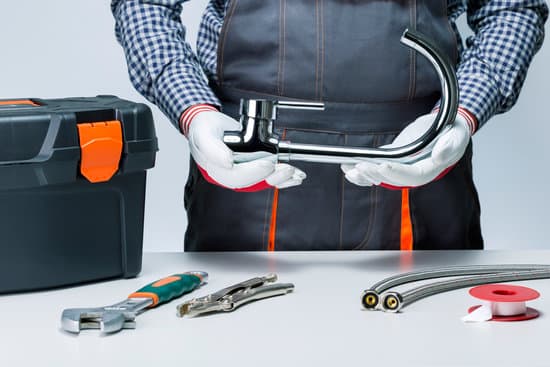When it comes to owning a home, there is a never-ending list of improvements and renovations that can be made. From minor updates to major overhauls, homeowners are constantly seeking ways to improve their living spaces. But what are the best home improvements?
Which projects will add value, enhance functionality, and create a more enjoyable living environment? In this article, we will explore these questions and provide you with a comprehensive guide on the top home improvement projects that are worth your time and investment.
Home improvements matter for several reasons. Firstly, they can significantly increase the value of your property. Whether you plan on selling in the future or simply want to build equity in your home, making strategic improvements can boost its overall worth.
Secondly, home improvements have the power to transform your living space into a more functional and visually appealing environment. By upgrading key areas of your home, you can create a space that better suits your needs and lifestyle. Lastly, investing in certain types of improvements can result in substantial energy savings, reduce utility bills, and contribute to a more sustainable living experience.
Throughout this article, we will dive into various categories of home improvements and discuss the most effective ways to achieve each one. From boosting curb appeal to maximizing relaxation in your bathroom, we will cover it all.
By providing detailed insights into each type of improvement project, our goal is to equip you with the knowledge needed to make informed decisions for your own home improvement endeavors. So let’s get started on this journey towards creating an enhanced living space that reflects your unique style and meets all your practical needs.
Boosting Curb Appeal – Enhancing Your Home’s Exterior
A home’s exterior is the first thing that people see when they visit or drive by, so it’s important to make a good first impression. Enhancing your home’s curb appeal not only increases its aesthetic appeal but also its value in the real estate market. There are many ways to boost curb appeal, ranging from simple and affordable changes to more extensive renovations.
One of the most effective ways to enhance your home’s exterior is by giving it a fresh coat of paint. This not only improves the overall appearance but also serves as protection against weathering and damage. Choose a color scheme that complements your neighborhood and suits your personal style. Additionally, consider painting or staining any worn-out fencing or a front porch to give them a refreshed look.
Another aspect of boosting curb appeal is landscaping. Well-maintained gardens, lush green lawns, and colorful flowers can greatly enhance the overall appearance of your home. Consider creating defined planting areas with borders or retaining walls for added visual interest. If you don’t have a lot of space for gardening, window boxes or hanging baskets can still add charm and color to your home.
Lastly, pay attention to details like lighting fixtures, house numbers, mailboxes, and front door hardware. These small elements can make a big impact on the overall appeal of your home’s exterior. Upgrade outdated fixtures with newer designs that reflect current trends or suit the architectural style of your home. These simple changes can give an instant facelift to your home without breaking the bank.
| Home Improvement Idea | Average Cost | Estimated Value Added |
|---|---|---|
| New Exterior Paint | $1,000 – $3,000 (depending on size) | Up to 5% of home value |
| Landscaping and Gardening | $500 – $5,000 (depending on scope) | Up to 15% of home value |
| Upgraded Lighting Fixtures | $200 – $1,000 (depending on number) | Up to 3% of home value |
Remember, when it comes to boosting curb appeal, even small changes can have a big impact. Whether you choose to repaint your house, add some landscaping, or upgrade the lighting fixtures, enhancing your home’s exterior is a worthwhile investment that will not only make your home look more appealing but also increase its overall value.
Creating a Welcoming Entryway – Transforming Your Front Door and Foyer
When it comes to home improvements, many homeowners tend to focus on the interior of their homes. However, neglecting the exterior can make a significant impact on how your home is perceived. One area that often gets overlooked but can greatly enhance your home’s curb appeal is the front door and foyer.
Revitalizing Your Front Door
The front door serves as the focal point of your home’s exterior, so giving it a fresh look can dramatically transform its appearance. Start by choosing a color that complements the style and architecture of your home while making a statement. A bold color like red or blue can add personality and make your home stand out in the neighborhood.
In addition to repainting, consider upgrading your front door hardware for added charm and security. Replace worn-out doorknobs, hinges, and locks with new ones that match the overall style you want to achieve. This small change can make a big difference in modernizing and enhancing the overall look of your entryway.
Transforming Your Foyer
As guests enter your home, their first impression is often formed in the foyer. Taking the time to revamp this space can create an inviting atmosphere for both family members and visitors alike. One way to do this is by adding elements that reflect your personal style while also being functional.
Consider installing entryway furniture such as a bench or console table that not only provides storage space but also serves as an eye-catching design element. Decorative hooks or an umbrella stand can help keep clutter at bay while adding visual interest. Adding a mirror can also make the space appear larger while offering guests a last-minute spot to check their appearance before leaving.
Taking steps to improve your front door and foyer not only enhances the aesthetics of your home but also sets the tone for what lies beyond. Whether you choose to revitalize your front door or transform your foyer, these changes can make a lasting impression on visitors and create a warm and welcoming entryway.
Enhancing Functionality and Efficiency – Upgrading Your Kitchen
The kitchen is often considered the heart of the home, a place where meals are prepared, family and friends gather, and memories are made. Upgrading your kitchen not only enhances its functionality but also increases the efficiency of your daily cooking tasks. Whether you’re looking to modernize your kitchen or simply improve its overall design, there are several key areas to focus on.
- Cabinetry: One of the most significant aspects of a functional kitchen is ample storage space. Upgrading your kitchen cabinets can help you maximize storage capacity while also giving your kitchen a sleek and stylish look. Consider installing custom cabinetry that suits your specific needs, such as pull-out drawers for easy access to pots and pans or built-in spice racks for organization.
- Countertops: The right countertops can make all the difference in terms of both aesthetics and functionality. Consider upgrading to durable materials like granite or quartz that are resistant to stains and scratches. Additionally, pay attention to the layout of your countertops to ensure there’s sufficient workspace for meal preparation.
- Appliances: Outdated appliances not only reduce efficiency but can also increase energy consumption. Investing in energy-efficient appliances can significantly lower utility bills over time while minimizing your environmental impact. Look for appliances with an ENERGY STAR rating, indicating that they meet strict standards for energy efficiency.
By focusing on these key areas during a kitchen upgrade, you can enhance both functionality and efficiency while creating a beautiful space that reflects your personal style. Additionally, consider working with a professional designer or contractor who can provide expert guidance throughout the process and help you make informed decisions regarding materials, layouts, and appliance choices.
(Unordered List)
- Upgrade cabinetry to maximize storage capacity.
- Install durable countertops like granite or quartz.
- Invest in energy-efficient appliances with an ENERGY STAR rating.
With these improvements in place, you’ll have a kitchen that not only meets your daily needs but also adds value to your home for years to come.
Maximize Relaxation – Revamping Your Bathroom
Revamping your bathroom can be one of the most rewarding home improvement projects you can undertake. A well-designed and functional bathroom not only enhances your daily routine, but it also adds value to your home. In this section, we will explore some key aspects to consider when revamping your bathroom and how to maximize relaxation in this space.
When revamping your bathroom, it is important to consider both aesthetics and functionality. Start by assessing the current layout and determine if any changes need to be made to improve the flow and efficiency of the space. Upgrading fixtures such as faucets, showerheads, and towel bars can instantly give your bathroom a fresh look. Additionally, investing in a high-quality vanity with ample storage can help keep your space organized and clutter-free.
Another important consideration when revamping your bathroom is lighting. Good lighting is essential for creating a soothing atmosphere in this space. Incorporating natural light through windows or skylights can make your bathroom feel bright and open. For artificial lighting, opt for fixtures that provide both task lighting for grooming needs as well as ambient lighting for relaxation.
One popular trend in bathroom revamps is adding spa-like features for a truly indulgent experience. Consider installing a luxurious soaking tub or a rainfall showerhead for an added touch of relaxation. Incorporating elements such as heated floors, towel warmers, or even a built-in sound system can further enhance the overall ambiance of your bathroom.
| Common Bathroom Upgrades | Benefits |
|---|---|
| New fixtures (faucets, showerhead) | Fresh look and improved functionality |
| Upgraded vanity with ample storage | Organization and decluttering |
| Natural and artificial lighting improvements | Brighter and more soothing atmosphere |
| Luxurious features (soaking tub, rainfall showerhead) | Enhanced relaxation and indulgence |
| Spa-like elements (heated floors, towel warmers) | Increased comfort and luxury |
By revamping your bathroom with these considerations in mind, you can transform it into a tranquil oasis where you can relax and rejuvenate after a long day. Whether you choose to incorporate luxurious features or focus on maximizing functionality, investing in your bathroom will not only enhance your daily routine but also increase the value of your home.
Expanding Space – Adding an Extra Room or Extension
Adding extra space to your home can not only provide you with more room for living and storage, but it can also increase the value of your property. Whether you need a dedicated home office, a guest bedroom, or simply more space for your growing family, adding an extra room or extension is a popular choice for homeowners looking to expand their living areas.
There are several options available when it comes to expanding space in your home. One option is to convert an existing space, such as a basement or attic, into a functional room. This can be a cost-effective solution as it eliminates the need for extensive construction work. However, keep in mind that there may be limitations in terms of ceiling height and natural light in these spaces.
Another option is to build an extension onto your home. An extension allows you to create a completely new room that seamlessly integrates with the rest of your house. This can be particularly beneficial if you want to add square footage to your main living areas or if you want to create a specific type of room like a sunroom or a home gym.
When planning an extension or adding an extra room, it’s important to consider factors such as budget, building permits, and design coherence with the existing structure. Hiring professionals such as architects and contractors can help guide you through the process and ensure that the project is completed smoothly and up to code.
Things to Consider When Adding an Extra Room or Extension
- Determine your specific needs: Before embarking on any major remodeling project, consider how this additional space will benefit you and meet your household’s unique needs.
- Set a realistic budget: Expanding space can be costly, so establish a budget early on and stick to it. Remember that additional costs may arise during construction.
- Obtain necessary permits: Check with local authorities about any necessary zoning permits or building approvals before starting construction.
- Hire professionals: Unless you have extensive experience in construction, it is advisable to hire professionals such as architects, contractors, and interior designers who can offer guidance and expertise throughout the project.
- Ensure design coherence: The new space should blend seamlessly with the existing architecture of your home. Consider factors such as exterior finishes, rooflines, and overall aesthetics to maintain visual harmony.
By carefully considering your needs, budget, and professional assistance, adding an extra room or extension can significantly enhance your living space and increase the functionality and value of your home.
Smart Home Innovations – Incorporating Technology to Your Home
In today’s increasingly connected world, incorporating smart home innovations into your home is becoming a popular choice for homeowners looking to upgrade their living spaces. With advancements in technology, there are endless possibilities in making your home more efficient, convenient, and comfortable. From voice-controlled assistants to automated lighting systems, integrating smart home devices can enhance your daily life and provide numerous benefits.
One of the most popular smart home innovations is the advent of voice-controlled assistants such as Amazon Echo or Google Home. These devices can be connected to various other smart devices in your home, allowing you to control them with simple voice commands.
For example, you can adjust the thermostat temperature, turn on/off lights, play music, or even order groceries just by speaking out loud. The convenience that these voice-controlled assistants bring is unparalleled and can streamline tasks within your household.
Automated lighting systems are another smart addition that can greatly impact the ambiance and functionality of your home. These systems allow you to program your lights to turn on or off at specific times or control them remotely through a smartphone app.
With this feature, you can easily create different lighting scenes for various activities or moods within your space. Whether it’s setting soft mood lighting for a cozy movie night or brightening up the room when reading a book, automated lighting systems offer flexibility and energy-saving benefits to homeowners.
Furthermore, security is an important aspect of any home improvement project, and incorporating smart security devices into your home is becoming increasingly popular. From video doorbells that allow you to see who’s at your front door from anywhere in the world to smart locks that enable keyless entry for family members or guests, these technologies offer peace of mind and ensure the safety of your household.
By incorporating technology into your home through smart home innovations like voice-controlled assistants, automated lighting systems, and advanced security features, you can create a modern living space that not only improves convenience but also increases efficiency and comfort. As the possibilities for smart home devices continue to expand, homeowners have more opportunities than ever before to integrate technology seamlessly into their daily lives.
Increasing Energy Efficiency – Investing in Solar Panels and Insulation
Solar Panels: A Sustainable Investment
Installing solar panels on your home is not only a wise financial decision, but it also benefits the environment. Solar panels harness the power of sunlight and convert it into usable electricity, reducing your reliance on traditional energy sources. This not only lowers your utility bills but also decreases your carbon footprint, making it an attractive option for those looking to make their homes more energy-efficient.
Investing in solar panels can be a long-term solution that provides significant savings over time. By generating your own electricity through solar power, you can offset a substantial portion, if not all, of your energy needs. In many cases, homeowners with solar panels are able to sell excess energy back to the grid, further offsetting their costs and potentially earning income.
Insulation: Improving Energy Efficiency
Proper insulation is essential for maintaining a comfortable living environment and reducing energy consumption. Without adequate insulation, heat escapes during winter months and enters during summer months, forcing you to use more heating or cooling systems to maintain a comfortable temperature. This results in higher energy bills and increased strain on HVAC systems.
Investing in quality insulation can greatly improve the energy efficiency of your home. Insulating materials such as foam or fiberglass can be added to walls, roofs, floors, and other areas to prevent heat transfer. This helps keep warm air inside during winter and cool air inside during summer while resisting outside temperatures from entering your home.
By insulating your home effectively, you can reduce the need for excessive heating or cooling throughout the year. This not only saves you money on energy bills but also reduces the strain on HVAC systems, resulting in fewer repairs and a longer lifespan for these appliances.
The Benefits of Increasing Energy Efficiency
There are numerous benefits associated with investing in solar panels and insulation to increase a home’s energy efficiency. Firstly, homeowners will experience substantial savings on their energy bills over time, as they rely less on electricity and heating/cooling systems. This frees up more money to be used for other expenses or to invest in further home improvements.
Secondly, increasing a home’s energy efficiency is an environmentally friendly choice. By reducing the reliance on fossil fuels and conserving energy, homeowners can lower their carbon footprint and contribute to a cleaner and greener planet.
Lastly, homes with high energy efficiency are often more comfortable to live in. A well-insulated home maintains a consistent temperature throughout the year, reducing drafts and eliminating cold spots. This creates a healthier and more enjoyable living environment for occupants.
As you consider which home improvements to prioritize, investing in solar panels and insulation should be high on your list. Not only will these upgrades provide immediate benefits in terms of utility bill savings and comfort, but they also position your home as a sustainable residence that contributes positively to the environment.
Elevating Outdoor Living – Building a Deck or Patio
Outdoor living spaces are becoming increasingly popular as homeowners look for ways to extend their living areas beyond the confines of their homes. Building a deck or patio is an excellent home improvement project that can elevate your outdoor living experience while also adding value to your home. In this section, we will explore the benefits and considerations of building a deck or patio.
Building a deck or patio provides you with a versatile space where you can relax, entertain, and enjoy the outdoors. It offers an opportunity to create an inviting atmosphere where you can host gatherings with family and friends, have barbecues, or simply unwind after a long day. Additionally, decks and patios provide a seamless transition between your indoor and outdoor spaces.
When considering building a deck or patio, it is important to evaluate the size and layout of your outdoor area. Assess how much space you have available and determine the type of structure that would work best for your needs.
Decks are elevated platforms typically made of wood or composite materials that can be built at various heights to accommodate sloping terrain or multi-level designs. Patios, on the other hand, are ground-level surfaces usually made of stone, concrete, or brick.
Another vital consideration is the intended use and functionality of your outdoor space. Think about how you plan to utilize it – whether it’s primarily for dining, lounging, gardening, or all of the above. This will help you determine what features and amenities you may want to incorporate into your deck or patio design.
Conclusion
In conclusion, when it comes to home improvement projects, it is crucial to make informed decisions that align with your goals and priorities. The best home improvements will not only enhance the aesthetics and functionality of your property but also provide a good return on investment.
Boosting curb appeal can significantly increase the value of your home and make a lasting impression on visitors. By enhancing your home’s exterior through landscaping, fresh paint, or new siding, you can create an inviting atmosphere that sets the tone for the rest of the property.
Creating a welcoming entryway is another important aspect of home improvement. Upgrading your front door and foyer can improve the first impression people have when they enter your home. Consider investing in a well-designed front door that complements the style of your house and enhances security. Adding elements like a foyer table, mirror, or artwork can also make a statement while providing practicality.
In addition to boosting aesthetics, improving functionality and efficiency in key areas like the kitchen and bathroom can greatly enhance daily living. Upgrading appliances, installing energy-efficient fixtures, or reconfiguring layout options are all worth considering when aiming to maximize usability and reduce energy consumption.
When planning home improvements, it’s essential to evaluate how certain additions or extensions will add value both aesthetically and practically. Expanding space by adding an extra room or extension may provide more square footage for comfortable living and potentially increase property value at the same time.
Lastly, incorporating smart home innovations into your renovation projects can add convenience and efficiency to various aspects of everyday life. From automated lighting systems to voice-controlled thermostats, technology features can improve comfort while showcasing modernity in your home.
Ultimately, by considering factors such as curb appeal enhancement, upgrading key spaces like kitchen and bathrooms for functionality, extension for additional space requirements, embracing smart technology features for convenience, along with creating a warm entryway that increases aesthetic appeal – homeowners can make informed decisions when planning their home improvement projects. With careful consideration of these aspects, one can transform their house into a dream home while increasing value and enjoyment for years to come.
Frequently Asked Questions
What home upgrades are not worth it?
Not all home upgrades are worth the investment, and it’s essential to understand which ones may not provide a significant return. Some upgrades that might not be worth it include adding a swimming pool, extravagant landscaping, or highly personalized features that may not appeal to potential buyers.
While these improvements may enhance your enjoyment of the home, they often have limited appeal and can be costly to maintain or remove if they do not align with buyers’ preferences down the line. It’s crucial to consider the potential future resale value when deciding on home upgrades.
What home projects add the most value?
Several home projects tend to add substantial value to a property. One such project is kitchen remodeling, as it is considered the heart of a home for many families. Upgrading appliances, countertops, cabinets, and fixtures can significantly increase both the functionality and aesthetic appeal of the space.
Another valuable improvement is bathroom renovations, particularly when focusing on enhancing functionality and creating a spa-like atmosphere. Adding an additional bathroom or finishing an unfinished basement are also renovations that usually offer a high return on investment. Ultimately, projects that improve fundamental areas of the home tend to add the most value.
What renovation adds the most value?
While determining which renovation adds the most value can vary depending on various factors such as location and market trends, one renovation often stands out: adding square footage or expanding living space. Whether it involves converting an attic or basement into a functional room, building an extension, or even adding another floor altogether – increasing usable square footage typically leads to a significant increase in a home’s value.
This type of renovation appeals to many buyers who prioritize space and functionality in their homes. However, it’s essential to consider local zoning regulations and obtain proper permits before proceeding with any expansion project to ensure compliance with building codes and maintain resale value over time.

I’m thrilled to have you here as a part of the Remodeling Top community. This is where my journey as an architect and remodeling enthusiast intersects with your passion for transforming houses into dream homes.





